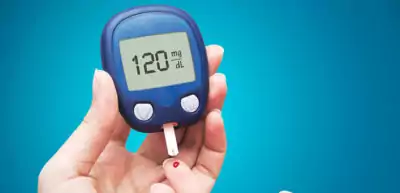
Basics
Symptoms of Diabetes Type 2: What You Should Know
Dec 1, 2016Diabetes is not just about high blood sugar levels. That is just one of the symptoms of type 2 diabetes. When we look at the causes of type 2 diabetes, we see that it is about having too much insulin and your body’s resistance to that insulin.
It can take years for diabetes to reach the full blown lab parameters of blood sugar that it needs to reach for it to be classified as “diabetes”. Identifying the symptoms and taking immediate action could prevent more severe symptoms of type 2 diabetes. These are generally termed as “complications” of diabetes, like damage to kidneys, damage to eyes, cardiovascular problems and so on.
Please note, these symptoms could be caused by other underlying medical conditions. Please use this guide to get a diagnostic lab test or consult a doctor, rather than self-diagnose yourself as a diabetic.
Common Symptoms of Diabetes Type 2
Frequent Urination, Especially At Night
The function of the kidney is to filter our blood, remove waste and reabsorbing nutrients so they are not lost. When there is excess glucose in the blood, it being a nutrient, the kidneys work extra hard to re-absorb the sugar back into the body. In this process, they are unable to reabsorb 100% of the sugar, resulting in some of the glucose “leaking” through the urine. Glucose “attracts” water wherever it is, it does so in the kidney as well, creating an excess volume of urine in diabetics. The thumb rule to remember is that this condition, called polyuria, is defined as producing more than 3 liters of urine per day. This abnormal loss of water from the body also makes you thirstier, leading to another common symptom of diabetes, frequent thirst.
Frequent Or Excess Thirst
Sugar has a tendency to draw water, the excess sugar in the blood pulls water from the cells. These cells become dehydrated because of the water loss and this leads to thirst. This thirst leads to more water consumption in diabetics. This water is excreted quickly in the form of urine via the kidneys to expel the excess blood sugar. This leaves the cells still lacking water, which again signals thirst. The diabetic is therefore stuck in the vicious cycle of remaining thirsty even after drinking plenty of water.
Feeling Tired
Tiredness that does not go away despite proper rest and sleep can lead eventually to fatigue. In diabetics, tiredness can be on account of two reasons.
- One, lack of energy inside cells despite high blood sugar. This can happen either because the body is not producing enough insulin (to escort the sugar into the cells) or because the cells are resistant to the insulin that is available.
- Two, lack of energy because your blood sugar had dropped badly – a condition called hypoglycemia. In those already on diabetic medication, this could even be caused by the medication being too strong.
The irony is often that diabetics feel this dip just after a meal because digestion needs energy. When the whole body is already starved for energy, the additional digestive burden makes you feel even more tired. So watch out for those severe post-meal energy dips.
Frequent Hunger, Especially Soon After A Meal
Along with producing too much urine and feeling too much thirst, this is the third most common symptom of diabetes. Diabetics can feel hungrier than most. Although the food they eat converts to sugar in their blood stream, it is unable to get into the cells. So the cells send a distress signal to the brain to say they are starving. The brain interprets this as a cry for food and sends the hunger impulse out, making you reach out for food again. In diabetics who are on medication, if the medication is higher than it needs to be, it can lead to hypoglycemia or a low blood sugar. This too could make you feel shaky and hungry.
Slow Healing of Wounds
Undetected diabetes can cause damage to fine nerves anywhere in the body. The skin, being so rich in its network of fine nerves, (to enable us to feel properly) is especially vulnerable. As the high levels of sugar in the blood damage nerves, the nerves are unable to direct proper supply of nutrients and efficiently remove wastes from repair sites. A normal paper cut could take a week or more to heal, simple wounds fester for longer before they are fully repaired. Abscesses and boils are also part of the diabetic’s worries, since the high sugar in the blood allows bacteria and other opportunistic infections to take root easily. The body has to fight them off and this takes extra time and effort.
Difficult to Heal Recurring Infections
Yeast feeds on sugar. Having too much sugar in the blood leaves us vulnerable to candida(thrush), the most common form of yeast. Yeast loves moist, dark areas of the body, like the mouth, vagina, penis and certain areas of the skin. In women, high blood sugar is often linked to repeated instances of urinary tract infections and vaginal infections. Infections of the genital area are one of the type 2 diabetes symptoms in men that are often not clearly linked to diabetes by patients or doctors. To help you identify the symptoms of a yeast infection in the 3 most common body regions, we’re listing what you may experience.
Oral Thrush
- Painful or sore palette and tongue, including the throat
- Bitter or metallic, nasty taste
- Bleeding or redness including red-rimmed ulcers
- White, creamy patches in the mouth or tongue
- Cracked corners of the lips, also called angular cheilitis
Genital Thrush in Men
- Redness, itchiness or swelling of the head of the penis
- Sticky discharge beneath the foreskin, even when not aroused
- White, curd like appearance on the penis skin, including a bad smell sometimes.
- Pain when passing urine
- Intercourse painful
Genital Thrush in Women
- Soreness and irritation of the vagina
- White curd/soft cheese like appearance on the vaginal skin folds
- White vaginal discharge, including bad smell
- Pain during sex
- Itching or redness of the vulva (the outer parts of the vagina)
If you have any of this persistently, do not ignore undetected diabetes as a possible cause. Those who know they have diabetes and are on medication should also take this seriously. It could be a sign that your blood sugar is not under control despite the medications. Remember, itchiness around the genital area alone can be a one of the likely symptoms of type 2 diabetes. If you have ruled out other infections, do consider getting a check-up.
Darkening of Skin
Also called acanthosis nigricans, these are quite distinctive and result in a darkening of the skin around folds, typically affecting the armpits, neck (usually on the back of the neck), groin and fingers or toes. In addition to the darkening, the skin may feel like leather or velvet (rougher or smoother than the rest of the skin) and may also have a funny smell or an itch. Some kinds of skin disease including psoriasis may also be linked to diabetes. This darkening of the skin is often an early sign of insulin resistance and can help you detect and deal with diabetes well in time.
Hazy And Blurred Vision
Too much sugar can cause water to be drawn into the eyes as well. The extra pressure on the lens in your eye can cause you to have blurred or hazy vision. Low blood sugar, which is the flip side of diabetes can cause blurry vision too. Finally, diabetic neuropathy or damage to nerves from undetected diabetes can also cause blurry vision.
Unexplained Weight Loss Or Muscle Loss
Diabetics have trouble getting sugar into their cells. To create energy, the body could resort to burning fat and muscle instead. Unexplained or sudden weight loss of around 5% of your normal body weight should be enough of a red flag to test for diabetes.
Do remember the caveat at the start of this article. There could be other medical reasons causing the weight loss.
Risk Factors For Type 2 Diabetes
The risk factors that cause type 2 diabetes, as we all know now include:
- Genetics: if type 2 diabetes runs in your family
- Obesity: Being overweight can cause diabetes, increasing your risk by more than 80% compared to someone who is not overweight
- Hypertension: Or high blood pressure
- Medication: Being on certain prescription medications for a long time
- Processed foods: Eating junk food and/or consuming alcohol in large quantities
- Sedentary lifestyle: Leading a lifestyle with little or no exercise





